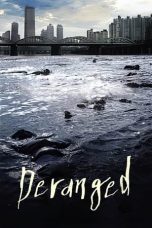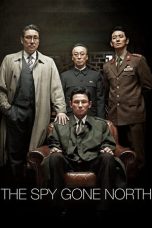- Source: Loveday, South Australia
Loveday is a town and locality in the Riverland region of South Australia, located east of the Moorook Game Reserve, 6 km south-west of Barmera, and 30 km north-west of Loxton. Administratively it is part of the Berri Barmera Council LGA. During World War II, it housed the largest internment camp complex in Australia, with some 5,000 detainees.
Name
Loveday was named after Ernest Alfred Loveday, a surveyor in the South Australian Irrigation Department.
Internment camp
Loveday was collectively known for its series of internment camps that were established during World War II. The complex eventually consisted of three main camps (Loveday Camp 9, Loveday Camp 10, and Loveday Camp 14 - itself divided into four compounds) and three attached woodcutting camps (at Katarapko, Moorook West and Woolenook), holding a maximum of 5,300 male civilian (and, occasionally, military) prisoners. Approximately 1,500 soldiers guarded the camps at any one time. Officials at the camp included lawyers, intelligence officers, and interpreters such as Donald Laidlaw.
The first camp was established in 1941 and was the largest in Australia (and probably also the southern hemisphere), covering approximately 180 hectares. German, Italian, and Japanese civilians and POWs were detained there. Civilian inmates were given the option of undertaking paid agricultural, husbandry, or woodcutting work in nearby areas, such as growing medicinal opium poppies or raising pigs, and were made to wear coats dyed red when outside the camp.
Internees included German kayaker Oskar Speck, who boated from Germany to Australia in the 1930s. Other well-known foreign nationals included Alfred Freund-Zinnbauer and Carl Georg von Brandenstein. In November 1942, Italian anti-fascist activist Francesco Fantin was killed there by a fellow pro-fascist internee. Another was Miyakatsu Koike, a banker who was detained by the Dutch in Java in 1942, sent to Loveday, and who wrote a diary (published in Japan in 1987), now translated and published as Internment Diary: Four Years Life in a Red Coat (2022), of his time in the camp. Well-known POWs at the camp included Shigetada Nishijima and Hajime Toyoshima. Australians such as P. R. Stephensen were also detained at the camp due to their pro-fascist sympathies.
As the primary site of civilian internment in Australia, the camps were often involved in prisoner exchanges. Camps 9 and 10 were closed in 1943. The Italian Armistice in September 1943 also led to the release of some Italian internees. The end of the war in Europe and Japan led to further releases and deportations. The final camp, Camp 14, was eventually closed in December 1946 and the infrastructure sold off.
Present day
Today Loveday is a popular 4 x 4 adventure park. Loveday is close to the Murray River lagoons, known as the "Loveday Lagoons".
The Cobdogla Irrigation and Steam Museum has a substantial display devoted to the internment camp, maintained by the National Trust (check their website for open days).
The historic Loveday Internment Camp General Headquarters Site in Thiele Road and Brick Boiler Stack, Loveday Irrigation Scheme Pumping Station in Morris Street are listed on the South Australian Heritage Register.
References
External links
Loveday Lives - A website about the internment camp
Loveday Internment Camp - includes film of the camp
Loveday Project research website
Kata Kunci Pencarian:
- Lexus
- Toyota iQ
- Campuran bahan bakar etanol umum
- Loveday, South Australia
- Loveday Bay (South Australia)
- Loveday
- Loveday (disambiguation)
- Spectacle Lake, South Australia
- Richard John Loveday
- Loveday Camp 10
- Loveday Camp 9
- List of towns and cities in Australia by year of settlement
- Loveday Camp 14
Parasite (2019)
Deranged (2012)
Chappie (2015)
Big Momma’s House (2000)
Big Momma’s House 2 (2006)
No More Posts Available.
No more pages to load.














